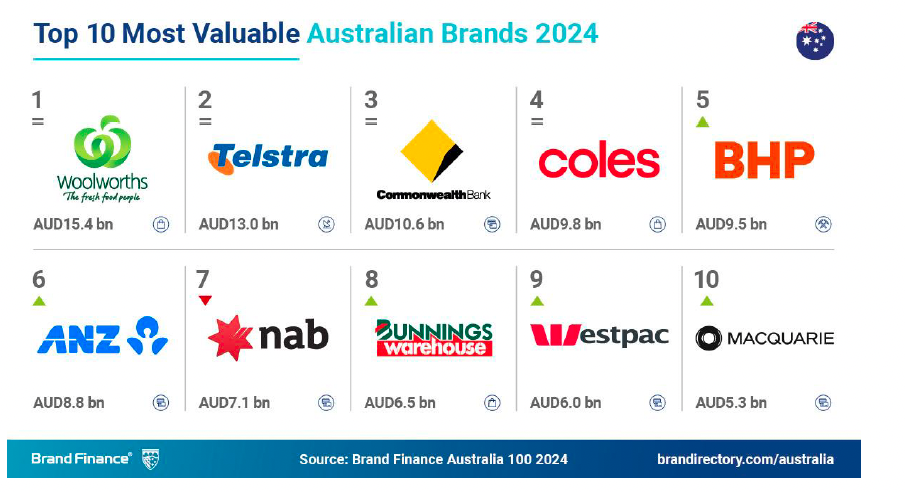MMM-multitouch data lessons: Coping with 50% footfall drops, predicting the next one and why Michael Kors is betting on under 12-month payback from combined MMM-MTA rollout

What you need to know:
- A year on from sharing with Mi3 the first wins from piloting Adobe’s market mix modelling solution, Michael Kors VP of global analytics, Manuel Neto, has put the dollars down and is rolling out the solution globally.
- While the data integration challenges were expected to be the hard bit, it’s the change management and building the understanding and acceptance of the model results across media and channel mixes that’s proving the longer term lift the retailer has to make in order to successfully act on the insights, Neto says.
- Unique US geopolitical and economic volatility meanwhile, has proven a unique force on retail macro conditions and has required the team to better harness and interpret external business insights to improve its marketing and media strategy.
- With such external forces contributing to an up to 50 per cent decline in store foot traffic in locations where immigrants and Hispanic communities are centred, Michael Kors has now begun rejigging its media and communications approach in response.
- Notwithstanding the challenges and unexpected inputs to better read outputs, plus the staff change management journey that is taking six months before action can be taken on the insights Neto says market mix modelling investment will pay off in 12 months.
I don't think it's going to take 12 months to pay back; I think it's going to be much faster.
Helping staff cope with the revelations market mix modelling is unearthing – channel synergies, performance levers, scenario planning, what happens when you slash budgets, and brand’s impact on it all – is the biggest leap in adopting the tools on a global scale at fashion retailer Michael Kors, its VP of global analytics, Manuel Neto says.
It’s been a year since Neto initially spoke to Mi3 about being one of five companies to pilot Adobe Mix Modeler. This year, he was again at the vendor’s annual Summit, sharing learnings from its modelling and attribution efforts as it goes into full global adoption. Inevitable are the big steps technologically. Michael Kors is now 88 model iterations down the path, has gone live with Adobe’s Mix Modeler solution in North America, started rollouts across 56 countries globally, and is plotting more multi-touch attribution (MTA) smarts to be in place by June.
“We did a bunch of different models and we took a lot of data – you’d think that would be the hardest part,” Neto told Mi3. “That was the fun part.”
Where the rubber is really hitting the road is change management, a process that begins with making transparent what the models are putting forward and challenging long-held beliefs on what media mixes actually work.
“What we’re finding is people need a little bit of extra love and education to understand. It’s the hand-holding process if you like: You used to like blue, and it’s still blue, but it’s a different shade of blue. Let me help you understand what that means for us,” Neto said.
Winning scenarios
Michael Kors is part of the Capri Holdings Group, with three brands operating across 56 countries. It previously used Adobe Analytics as its main source of analytics truth, then cobbled together a mix of highly manual custom models with last-touch attribution to get a historical view of marketing’s performance.
Pilot results using Adobe Mix Modeler included slashing the time it takes to action insights at Michael Kors by half, creating models in minutes, and unlocking – then validating – marketing scenarios that didn’t even exist previously to innovate programming. For example, from being able to look at two scenarios over a 40-hour period, the team found itself able to explore 100 scenarios in 20 minutes.
Michael Kors is now going a step further, aiding marketers and analysts to have conversations about what could happen if marketing dollars were cut in terms of overall impact on revenue against the main KPIs set by the retailer. “And if we do choose a path that potentially goes against it which we had previously discussed, it’s informed decision making. Ok, budgets are being cut, here’s what reality would look like for us this next season,” continued Neto.
On top of this, Michael Kors has saved dollars because “those dollars are working harder”. “It’s not by saying, I’m going to give you one bag back, it’s by saying my dollar is going to give you $4, $5 back instead of $1 or $2 from that return perspective,” Neto said.
I want to say some people are very happy [about our market mix modeller approach]; some people are probably talking about this during their therapy sessions. But it is giving us very powerful data back on those synergies, and it's been quite magical.
Channel and the importance of brand
So the big question: Has anyone at Michael Kors fallen out of love with social channels yet as a result of model findings? While declining to answer the question directly, Neto said channel synergies have become evident through the modelling. It’s also made the case why it’s worth investing in branding, and how it impacts performance.
“When you say that, everyone knows that. But there’s a difference between everyone knowing and everyone having proof of our impact, and how much moving the needle even by $10 could influence the overall return,” Neto said. “I want to say some people are very happy; some people are probably talking about this during their therapy sessions. But it is giving us very powerful data back on those synergies, and it’s been quite magical.”
A caveat, however: Michael Kors hasn’t dramatically made those channel investment shifts yet, again because of the very human aspects of transition. Under the change management roadmap between now and end of May, Neto’s team are publishing testings, making what scenario plannings are outputting transparent so Michael Kors can “really start putting dollars behind it, and accelerate some more investments”.
“We know where those changes are,” Neto said. “We’re still running our very old, historical Jurassic [attribution and mix] dinosaur together with the new one, so it’s a very clear scenario to show here’s the ROI from the tool perspective. Because it’s going to take time for the leadership team and the teams to understand the change; I’d say it’ll take six months.”
“The second element is the education piece: Go around, talk about the KPIs and how they are shifting, the channels, what you love, what you should not love, and go cry in the bathroom. Then the adoption, strongly and fully will likely come towards holiday season.”
Data lessons: Coping with a 50 per cent in-store footfall drop
Another curve ball for Michael Kors has been the data feeding into the models. “From a data perspective, the journey we’ve been in as a brand has been so little bit bumpy. We finally have a really strong new strategy. But when the bumpiness of the brand is happening, the data is bumpy as well,” Neto explained.
“You see things for the first time ever, and when we’re talking from a modelling perspective, that’s a disaster. It makes it harder, because you don’t have reference points to say, this happened two years ago, or last year.”
Take the political and economic volatility in North America, where Michael Kors is fully live, particularly in the first half of the year. Neto cited strong correlation between declining in-store retail traffic and negative, volatile political movements and media commentary. Foot traffic through stores situated where there is either a higher proportion of immigrants or Hispanic populations has fallen by up to 50 per cent, he said. Adobe’s Mix Modeller tool has an ‘business factor’ feature to bring external, temporary or one-off elements such as this into modelling.
“There are segments of the population that are scared of leaving their houses, which is impacting sales in the stores. So there was a lot of leveraging external references we didn’t have to leverage before, and how that’s going to factor into our results,” Neto commented. “All of that to be considered into the data that we weren’t expecting to.
“For example, when we started digging, again influenced by the external factors elements Mix Modeler brings in, there was a very strong correlation [between media] and raids or immigration issues, and people not leaving their homes. As a consequence, shopping centres were emptying and by consequence, our sales were dropping. What this enabled us to do is not only feed that data into the tool, but now predict that when there’s going to be another raid or another immigration announcement or something that could scare a population, we should expect [in-store traffic] decline.”
Such knowledge has already started to influence Michael Kors and adapting its media buying and go-to-market. “We are already leveraging that information to look at how we both communicate the love and also find ways of not losing the audience entirely. Because when we’re talking about declining traffic shopping mall of 40 to 50 per cent, the impact is significant,” Neto said.
The result is Michael Kors putting stronger focus on drive-to-store messaging. “The beauty of that [messaging and media] is it captures the element of, ‘we’re here, we love you, we have empathy’. It brings you back to Michael Kors, beyond the handbag, and the love and us saying, we’re here. We’re also bringing to the fore other ways customers can still engage with the brand if they don’t want to go to the shopping centres because of what’s happening,” Neto added.
There are segments of the population that are scared of leaving their houses, which is impacting sales in the stores … but [we can] now predict when there's going to be another raid or another immigration announcement or something that could scare a population, we should expect [in-store traffic] decline.
The stark reality of last-touch attribution’s prevalence
Adobe is also learning a lot alongside its customers – not just around how to ensure its Mix Modeler tool works technically, but also how customers adapt operationally so they use it successfully. The platform was launched by Adobe in 2022 as an answer to two measurement programs marketers continue to grapple with: Multi-touch attribution instead of limited last-click attribution (MTA), plus better gauging and optimising the marketing mix across paid, owned and earned channels through AI-driven mix modelling.
From the initial pilot with five businesses including Michael Kors 12 months ago, Adobe director of product marketing, Experience Intelligence, Lily Chiu-Watson, cited more customers, including H&R Block, which transitioned off a legacy MMM solution onto Adobe’s platform.
“If there’s anything I’ve learned in the last year, it’s that people need to understand how to be successful with the tool beyond what the technology does, and they don’t always have a blueprint for that,” Chiu-Watson commented. “Either they’ve never done MMM before, or it’s something they threw over the fence to an agency or partner, and waited for three to six months to come back.”
Another thing to come out over the last year in conversations is how few companies actually did have any form of multi-touch attribution framework or media modelling. “Two years ago, I thought most people were doing multi-touch attribution. What I’ve learned is actually nobody fully did that, and everybody makes decisions on last touch and MMM is really like for long-term planning,” Chiu-Watson said.
“You have long-term planning decisions being made on incrementality and everything else based on last touch. You’re not aligned in the decision making at all, and that makes for a very hard conversation with finance.
“Finance is saying, ok, you use this model to allocate, but then when I see the decisions you’re making in a quarter, that doesn’t line up at all with sort of insights you shared with me previously. You also have a very hard time predicting outcomes of the decisions you’re making if these are the systems you have in place.
“When you’re working in this system with many ways of measuring, you really cannot forecast what marketing is delivering. You may have a model you think you can explain marketing’s effectiveness, but it’s only the look back. And if it’s a look back, you can’t predict the look forward – and I’m not sure you’d have the confidence of the c-suite.”
For Chiu-Watson, such separation in measurement means marketing has been doing a lot of “subjective interpretation” at the very end to tie all sources of truth together into one coherent narrative. “It defeats the purpose of it all: You did all this work to be data driven right, and to sync touchpoints up across different channels. In the end, you’re creating two different stories, and creating another story on top right, and that is also not working as well as maybe it used to,” she said.
Neto also believed all the talk masked the reality that most organisations are still struggling to find a way to do multi-touch attribution and mix modelling effectively. Fear of what agency planners will do is another undercurrent Neto said needs to be aired and discussed.
“As an industry, we keep building on the fear rather than unpacking the solutions,” he said. “We had a conversation early on with our agency about this. Because I knew it could cast shadows. So I said let’s put this on the table, talk and work together to understand what it unlocks for us and the potential it enables, as well how it augments your work. Our agencies have been phenomenal partners – the change management roadmap was something we built together. Don’t fear it: Partner with it, implement it, learn with it.”
Surfacing up the real situation, not unicorns and rainbows
As to reality of how modelling busts persistent myths around which media channels to invest in, that’s still a work in progress for Michael Kor as discussed. Neto described it as surfacing the “parts of the data that are not unicorns and rainbows”.
“Assumptions have been confirmed, which is great, as it makes it easy for everyone to understand where it goes and what this enables. But also myths had to – and have been – de-mystified. It’s a combo of both good conversations and harder conversations, but an important conversation nonetheless,” he said. “Ultimately, the more we know and the more the data is helping us drive decisions and actionability, the better it is for all of us, particularly in a market where every dollar, every cent, counts even more.
“The resistance towards the information isn’t there. The question is: How long do we need to actually start driving action on top of this new information? I’m not going to use the word ‘delay’, it’s a timeline needed for everybody around the information to become familiar, to become comfortable, and to know what to do.
“After all, it’s brand new for them. I’m here saying hey, forget what you thought you’d learned about channels, and forget where you thought you should put your money. Here’s what you should put your money on. That requires changes from so many people and so many partners.”
New KPIs, old KPIs and agency impacts
KPIs will be part of this journey long-term, but Neto stressed Michael Kors is not abandoning previous KPIs for marketing either.
“You could have the concept of primary versus secondary drivers, and that’s okay too. That’s the journey we are in: Showing the differences between what you used to look at this and this particular KPI – you can still look at that, but that’s not the biggest driver. Here’s what you should really be looking at and why,” he said. “That’s the part that’s going to be harder for people to get to. Not because they don’t want to, but because they’ve been doing one thing for 20 years with KPI A and B. Now I’m saying, here’s KPI C.
“What I tell all of my peers and agency partners, is this: We’re not saying go away entirely from this channel. What we’re saying is you should not be allocating the majority of your budget for this channel. We’re not here to stop innovation, test and learn. Go ahead, allocate percentages that are not dangerous for the returns, go innovate, try, create, change the industry. Just don’t take all of the budgets.”
As to ROI off buying the tech, Neto cited a layer of efficiency building and information that shouldn’t be ignored. The second layer is the transformational KPIs, such as financial ones – how far are your dollars going and how much you get back.
“I don’t think it’s going to take 12 months to pay back; I think it’s going to be much faster, because particularly with people like us, who are very serious about the change management approach and the testing. It’s going to be very crystal clear where the opportunity lies,” he added.





